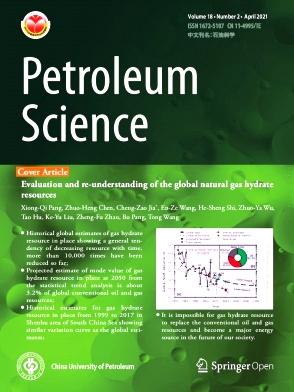Effect of preprocessing on performances of machine learning-based mineral composition analysis on gas hydrate sediments, Ulleung Basin, East Sea
IF 6
1区 工程技术
Q2 ENERGY & FUELS
引用次数: 0
Abstract
Gas hydrate (GH) is an unconventional resource estimated at 1000–120,000 trillion m3 worldwide. Research on GH is ongoing to determine its geological and flow characteristics for commercial production. After two large-scale drilling expeditions to study the GH-bearing zone in the Ulleung Basin, the mineral composition of 488 sediment samples was analyzed using X-ray diffraction (XRD). Because the analysis is costly and dependent on experts, a machine learning model was developed to predict the mineral composition using XRD intensity profiles as input data. However, the model’s performance was limited because of improper preprocessing of the intensity profile. Because preprocessing was applied to each feature, the intensity trend was not preserved even though this factor is the most important when analyzing mineral composition. In this study, the profile was preprocessed for each sample using min-max scaling because relative intensity is critical for mineral analysis. For 49 test data among the 488 data, the convolutional neural network (CNN) model improved the average absolute error and coefficient of determination by 41% and 46%, respectively, than those of CNN model with feature-based preprocessing. This study confirms that combining preprocessing for each sample with CNN is the most efficient approach for analyzing XRD data. The developed model can be used for the compositional analysis of sediment samples from the Ulleung Basin and the Korea Plateau. In addition, the overall procedure can be applied to any XRD data of sediments worldwide.
求助全文
约1分钟内获得全文
求助全文
来源期刊

Petroleum Science
地学-地球化学与地球物理
CiteScore
7.70
自引率
16.10%
发文量
311
审稿时长
63 days
期刊介绍:
Petroleum Science is the only English journal in China on petroleum science and technology that is intended for professionals engaged in petroleum science research and technical applications all over the world, as well as the managerial personnel of oil companies. It covers petroleum geology, petroleum geophysics, petroleum engineering, petrochemistry & chemical engineering, petroleum mechanics, and economic management. It aims to introduce the latest results in oil industry research in China, promote cooperation in petroleum science research between China and the rest of the world, and build a bridge for scientific communication between China and the world.
 求助内容:
求助内容: 应助结果提醒方式:
应助结果提醒方式:


